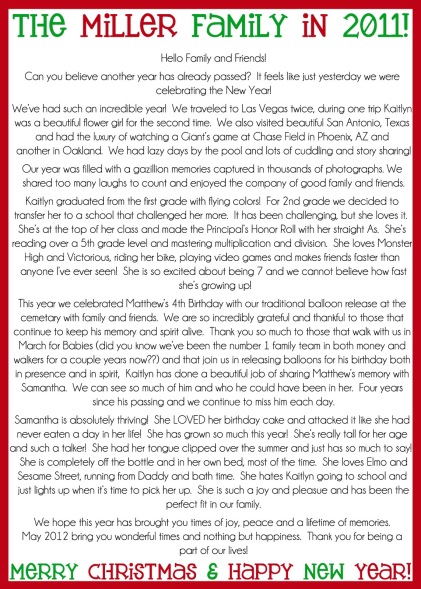How to Talk to Writers
A key principle of literary citizenship is that writers should build their community and expand their circles.
Not “network.” Not “schmooze.”
In her book Living a Literary Life, Carolyn See advises writers to send one “charming note” a day to someone in the publishing field—a writer, editor, publisher, etc. The point isn’t to ask for anything, but rather to just make a connection. These days, thanks to social media, it’s never been so easy to make those kinds of connections.
I require my Literary Citizenship students to friend or follow or email someone five times a week. Friending on Facebook, liking an Author Page, following on Twitter: these are “passive” acts. But at least once a week, they’re supposed to actually say something to somebody. Such as “I enjoy your work,” or “You published one of my favorite books,” etc.
 They’ve been using our private Facebook group to share their weekly lists. They get ideas about people to follow from seeing each other’s posts.
They’ve been using our private Facebook group to share their weekly lists. They get ideas about people to follow from seeing each other’s posts.
This activity, which I call “Charming Notes”/Network Building, is worth 100 points or 10% of their grade.
Staying in Touch with Writers
We’ve been doing this for five weeks now. Recently I asked my class, “Have you noticed a difference? Is your Facebook or Twitter feed different now?”
Much nodding of heads.
A student said that a year earlier, he’d interviewed the writer Bonnie Rough for Ball State’s literary magazine The Broken Plate. (You can check out the interview here.) “When she came to campus for her reading, she told me to ‘stay in touch.’ But what does that mean?” he asked.
“Well,” I said, “some writers say that but don’t really mean it. Some do mean it. The only way to find out is to stay in touch.”
“But how?” he asked. “Surely she doesn’t want me to send her a letter.”
In the Olden Days
I suddenly remembered my own bewildering early days as a writer, which occurred post-email but pre-social media. In those days, I was a faithful sender of Christmas cards and post cards. Every December I’d write a little newsletter about What I Did This Year, photocopy it, and stick it in with my Christmas cards. This is how I kept in touch with my teachers from undergrad and graduate school, as well as some of the writers I’d met along the way. At conferences. At readings.
I did the same thing with postcards.
Dear [Former Professor], I’m at AWP in [insert name of city] and remembered your class on [whatever]…
Dear [Writer I Met at That Conference], I just read your new book and really loved it. I just published one of my crazy circus stories in the Whatever Review.
Do you remember that?! When you published a story in the Whatever Review, added the line to your vita, shelved your contributor’s copy, maybe “shared” it by buying a round of drinks at your local bar, and that was it. Did anyone read your story? Who knew? Oh, the innocence of those days…and the loneliness.
Anyway, I sent these cards because it felt good to be in touch. People come to my mind many times a day. Before Facebook and Twitter, I’d usually take that opportunity to drop them a line.
The Old-Fashioned Christmas Card List
 When I went on Facebook in 2007, my mother asked me what it was. I said, “It’s like exchanging Christmas newsletters with all your friends, except instead of getting them at the end of the year in the mail, you get them in real time on your computer.”
When I went on Facebook in 2007, my mother asked me what it was. I said, “It’s like exchanging Christmas newsletters with all your friends, except instead of getting them at the end of the year in the mail, you get them in real time on your computer.”
Once upon a time, being on someone’s Christmas Card List meant something. It signified they considered you a part of their social circle. Incidentally, this is why hardly anyone sends holiday cards these days—because Facebook performs this function for us instead.
Now, I should say that I definitely didn’t grow up in the kind of family that networked. My blue-collar parents weren’t working their way up any ladders. In fact, I grew up in the kind of family and the kind of town where brown-nosing, trying to “get in good with the boss” was a sure ticket to ridicule if not outright ostracism. When my mom sent out Christmas cards, she sent them to her (ha ha) “social network,” which consisted of family, maybe a few co-workers, and her friends from high school. My folks lived in a small town, they hadn’t gone to college at that point, and so I’m sure every Christmas card my mom sent had a 46970 zip code. If it didn’t, I’ll bet it went to someone who used to have a 46970 zip code.
How to Make Friends and Influence People
What I’m trying to say is this: When you teach at an expensive, private college or university, you don’t have to teach your students the value of networking, that “who you know” matters. They get it. Or their parents do.
But my students don’t always get it. Or they get it and—to their credit—they’re uncomfortable with this whole notion of “expanding their circles,” which derives from “social circle,” which sounds a lot like kissing ass.
This, my friends, is why I had to call this all this activity “Literary Citizenship.” Because when my publishers said, “You have to start doing this work,” everything in me rebelled.
How to Stay in Touch
So, to my student who asked, “What does it mean when Bonnie Rough tells me to stay in touch?” I say:
My advice: simply follow her on social media. Everyone once in awhile, when the situation is appropriate, chime in with a comment or just “like” something she says. Stay on her radar in a genuine, meaningful way.
Recently, Rachel Fershleiser (who works at Tumblr) talked about planning an engaging book event, but what got my attention was a comment further into the interview about engaging with authors online:
I always think you should join Twitter or Tumblr and just listen for a while — you should follow people you think are interesting, and you should hear what kind of things they’re talking about, and what they have to say. Sometimes it’ll be about books, or about business, or whatever your topic, and sometimes it’ll be their amazing chili recipe, and you’ll find out which ones are engaging to you overall, and then when you start replying to them, it’s going to be like “check out this recipe from my grandma,” and not about just buying your book.
An analogy: Staying in touch with Bonnie Rough via social media is like being at a big cocktail party and she’s there, too. Would you run up to her and bombard her with questions? No. But by the same token, don’t NOT talk to her. You’ve met her. Go up and say hello.
(Maybe you grew up in the kind of family where your parents entertained? Where you were often being introduced to people you didn’t know and expected to make conversation? Maybe you’re extroverted and love talking to strangers? Well, screw you, because for the rest of us, walking up to a writer—in person or online—and talking to them is actually kind of hard.)
And students, don’t just stay in touch virtually, but IRL, too. Maybe you’ll go to AWP and she’s on a panel or gives a reading or you see her in the hallway. Go up to her and say hello. Trust me, most writers enjoy this.
Understand, though, that the more popular a writer gets, the harder it will be to talk to them.
In Sum
Anyway, why do I want my students to expand their circles and talk to writers, to send them charming notes and engage with them?
Because they have every right to.
Because it will make them feel like real writers.
[This post is cross posted here and on my course blog, Literary Citizenship]
Literary Citizenship Teaching Writing
2 comments
Comments are closed.